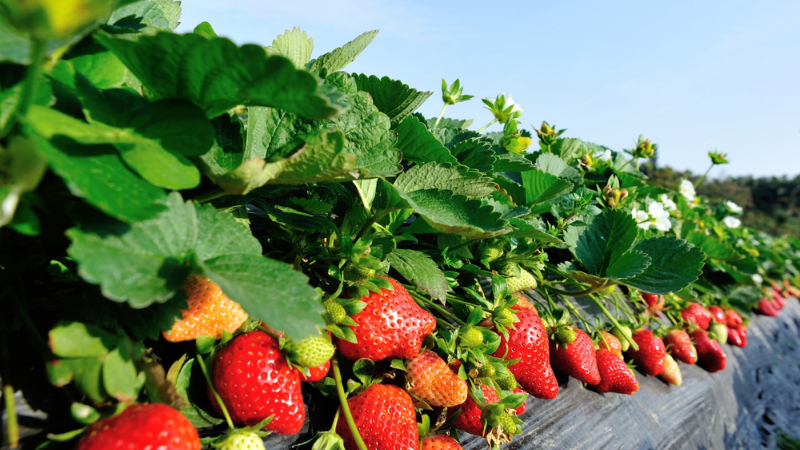Ambition Grows Big for this Texas Grape Grower

Lost Oak Winery President Roxanne Myers says her home state of Texas has plenty to offer wine lovers. She works closely with founder/stepfather Gene Estes, as crops have been challenging the past few years.
Photo courtesy of Lost Oak Winery
Twenty years ago, at a time when many people were discovering they could download encyclopedic information online, Roxanne Myers was selling reference books door to door. She was good at it, too. Her employer, Southwestern Co., named her its salesperson of the year.
Today, while Myers no longer has to hawk encyclopedias, catalogs, and atlases, her career goal is to put the state of Texas on the map when it comes to wine making. And there is no door the President of Lost Oak Winery, outside Fort Worth, will not knock on to accomplish that.
“The quality has come a long way,” Myers says of Texas wines. “If you’re not stuck on just your classic ‘Bordeaux’ varieties, you’re going to find high-quality, nuanced wines that you can find in any part of the world. And they’re just as good in Texas.”
Myers joined Lost Oak, founded by her stepfather, Gene Estes, upon its inception in 2007. Since then, she has progressed from working in the vineyards and tasting rooms to running the operation, the revenue of which has grown 600% the last 13 years.
“It’s a lifestyle business, and I’ve got a lot of responsibility,” Myers says. “I do a little bit more of the business management than the viticulture. I know a little bit about a lot of things, but I’m not your winemaker, and I’m not the viticulture specialist. I run the business, but I know enough to, you know, screw it up.”
Self-deprecation aside, Myers, 44, sounds like a wily grower while rattling off many of the challenges that come with viticulture, particularly in a state as diverse as Texas.
“All the way from which rootstock you’re going to be using, how you graft it, what the terroir is, the average rainfall, the potential pests, the fungi. We have herbicide drift issues right now in our state. You’ve got climate change. It runs the gamut in terms of threats to your vineyard,” Myers says.
GOOD TIMES, BAD TIMES
In general, warm-climate varietals will flourish in Texas — grapes that, according to Myers, thrive in the Rhone Valley of Southern France, some parts of Australia, Northern Spain, and, in the case of some Italian varietals, in the warmer part of Italy.
“Those are the kind of varietals that do better here. Not your ‘Bordeaux’ and ‘Burgundy’,” Myers says. “That’s a trend that you’re starting to see in Texas.”
But crop trends have provided mixed results for Texas wine grape growers the last seven growing seasons. The years 2015-2019 were all “huge crops,” Myers says. “We didn’t even know what to do with the fruit.” Then, 2020 and 2021 arrived, and “they were just horrible,” she says.
Myers would know as well as anyone. In 2021 she served as President of the Texas Wine and Grape Growers Association, only the second woman to do so. Her stepfather had served similarly in 2008.
During Myers’ one-year term, she dealt with the effects or after-effects of the COVID-19 pandemic and its lockdowns, a Halloween freeze in 2019, the “Snowmageddon” weather event of Feb. 14-19, 2021, and the ongoing dicamba spray drift lawsuit pitting Texas wine producers and grape growers against chemical companies Bayer and BASF.
“We’d been on a growth curve — tons of new wineries, a lot of people moving into the state, a lot of demand for Texas wine. But we’re in this weird two- to three-year period,” Myers says. “Now we’re creeping back up in 2022, and it’s looking pretty good so far. Fruit set is looking really good this year.”
COME ON DOWN, CALIFORNIA
Texas currently ranks fifth among U.S. states in wine production. The state is comprised of more than 750 wineries, Myers says.
“We need about 15,000 acres in the ground to accommodate all of their needs,” Myers says. “The number of permits to sell Texas wine will surpass Oregon at this rate.”
That will occur “very soon,” Myers says, thanks to an influx of migrating Californians.
“There’s the right clientele here just inside our state to make this a very attractive industry,” she says. “The Texas wine consumer is chocolate milk, sweet tea, and Dr. Pepper. We’re teaching them how to drink wine, whereas you get these California wine drinkers, and all you have to do is show them something new.
“I’m not saying that’s going to be easy. I’m just saying there’s an opportunity there.”










